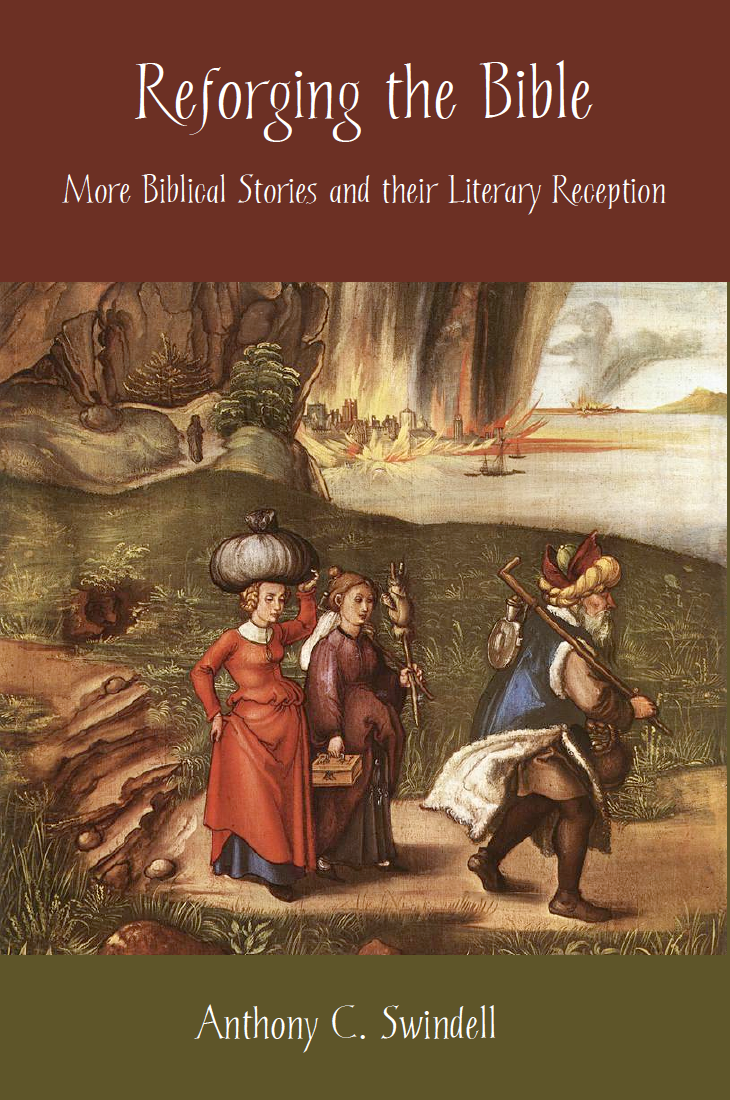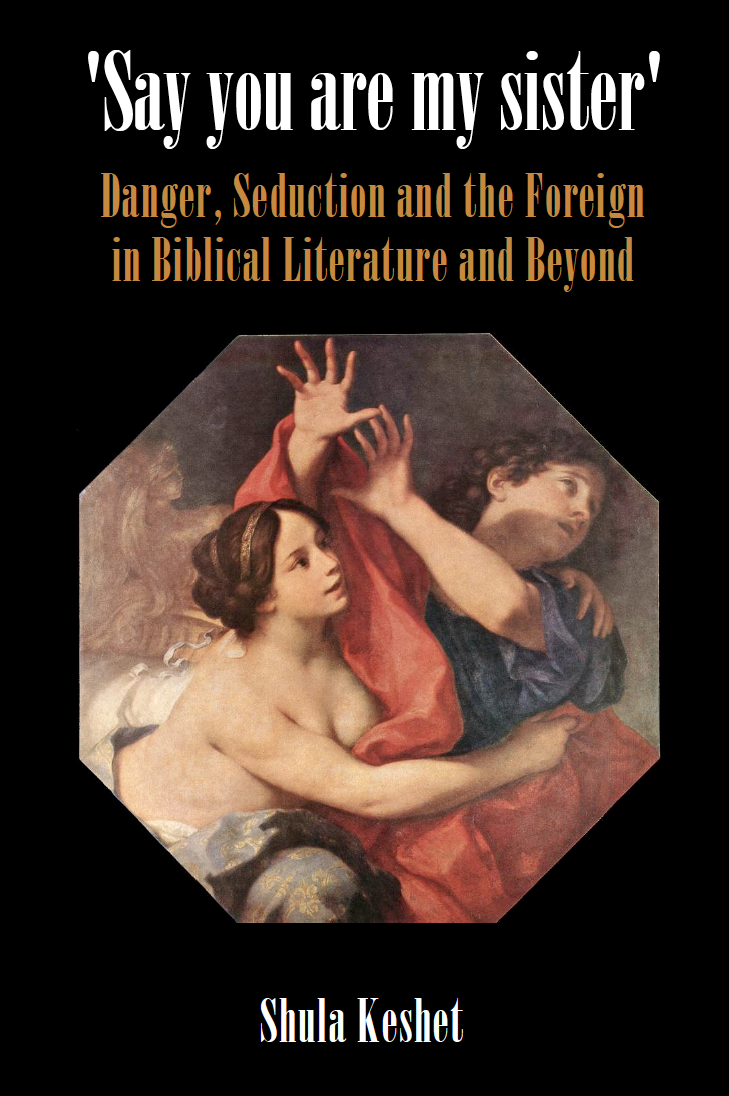‘Good Omens’ and the Bible
Published: Jun 2024
£50.00
Good Omens and the Bible provides a diversely rich collection of considerations of apocalypse and apocalypticism, via responses to the reception of the Bible in the landmark cultural icon that is Neil Gaiman and Terry Pratchett’s Good Omens: The Nice and Accurate Prophecies of Agnes Nutter, Witch (1990). These essays explore the perplexing, captivating, and curious interactions between Good Omens and biblical literature.
Interdisciplinary explorations reveal how both the novel and TV series reflects and explodes contemporary ideas about the end times. Filtering references to biblical apocalypses through the lens of popular culture, Good Omens shines a light on the received interpretations of apocalyptic thinking that resonate in the present, revealing in turn something about ourselves.
Together, these essays open up conversations about how Good Omens makes use of religious ideas about textuality, performance, theodicy, and the role of popular culture in the proliferation of those conversations. This book illustrates the ways in which the novel and series are agents in the continuation of cultural debates about important, wide-ranging theological and biblical issues.
‘Good Omens’ and the Bible
£50.00
Good Omens and the Bible provides a diversely rich collection of considerations of apocalypse and apocalypticism, via responses to the reception of the Bible in the landmark cultural icon that is Neil Gaiman and Terry Pratchett’s Good Omens: The Nice and Accurate Prophecies of Agnes Nutter, Witch (1990). These essays explore the perplexing, captivating, and curious interactions between Good Omens and biblical literature.
Interdisciplinary explorations reveal how both the novel and TV series reflects and explodes contemporary ideas about the end times. Filtering references to biblical apocalypses through the lens of popular culture, Good Omens shines a light on the received interpretations of apocalyptic thinking that resonate in the present, revealing in turn something about ourselves.
Together, these essays open up conversations about how Good Omens makes use of religious ideas about textuality, performance, theodicy, and the role of popular culture in the proliferation of those conversations. This book illustrates the ways in which the novel and series are agents in the continuation of cultural debates about important, wide-ranging theological and biblical issues.
Dictionary of the Bible and Western Culture
Published: Nov 2017
Price range: £19.50 through £60.00
Consumers of culture in the modern world — high culture or popular culture — discover before long that the Bible, its tales and its characters and its idioms, is woven into the culture. Most of us wish we knew the Bible better, and are often at a loss to know what the biblical source or reference is to phrases or ideas we encounter.
The editors of this unique volume have seen the need for an easy-to-use reference guide for those needing to track down information on characters, phrases, places, and concepts originating in the Bible. They assembled 200 scholars to write 1000 encyclopaedia entries on such biblical backgrounds to Western culture. The contributors to the volume have in mind readers without the specialization of formal biblical studies, and even those not familiar with the Bible's basic content. The presentation is twofold: entries begin with discussion of biblical terms in their original settings, and then illustrate occasions when those terms reappear in later cultural artefacts. This volume is then a dictionary of the reception of the Bible in later Western artistic and intellectual expression.
There is a great deal here to explore and discover; turning these pages will prove illuminating not only as an introduction to biblical literature but also as a demonstration of the Bible's persistent contributions to our cultural heritage.
Dictionary of the Bible and Western Culture
Price range: £19.50 through £60.00
Consumers of culture in the modern world — high culture or popular culture — discover before long that the Bible, its tales and its characters and its idioms, is woven into the culture. Most of us wish we knew the Bible better, and are often at a loss to know what the biblical source or reference is to phrases or ideas we encounter.
The editors of this unique volume have seen the need for an easy-to-use reference guide for those needing to track down information on characters, phrases, places, and concepts originating in the Bible. They assembled 200 scholars to write 1000 encyclopaedia entries on such biblical backgrounds to Western culture. The contributors to the volume have in mind readers without the specialization of formal biblical studies, and even those not familiar with the Bible's basic content. The presentation is twofold: entries begin with discussion of biblical terms in their original settings, and then illustrate occasions when those terms reappear in later cultural artefacts. This volume is then a dictionary of the reception of the Bible in later Western artistic and intellectual expression.
There is a great deal here to explore and discover; turning these pages will prove illuminating not only as an introduction to biblical literature but also as a demonstration of the Bible's persistent contributions to our cultural heritage.
Reforging the Bible: More Biblical Stories and Their Literary Reception
Published: Jan 2014
£55.00
Reforging the Bible continues the programme Anthony Swindell began in his earlier book, Reworking the Bible: The Literary Reception-History of Fourteen Biblical Stories (Sheffield Phoenix Press, 2010). It is a study of the reception in literature of over a dozen biblical stories, giving particular attention to rewritings that make radical changes to the original text. The reworkings are analysed using a morphology based on that of Gérard Genette in his study, Palimpsests. A new emphasis in this volume is on spatiality as a topic in rewritten biblical narratives.
The stories explored in this volume include those of Adam and Eve, Melchizedek, Lot and his Family, Joseph, Ruth, King Saul, David and Bathsheba, Tobit, the Virgin Mary, the Wedding at Cana, the Good Samaritan, Doubting Thomas, and the Second Coming. The literary reworkings discussed include the Old English Genesis A and Genesis B, the medieval Cyprian Feasts, the sixteenth-century broadside ballad David and Berseba, and works by Geoffrey Chaucer, William Shakespeare, Charles Dickens, Izak Dinesen, Carol Ann Duffy, André Gide, Rudyard Kipling, D.H. Lawrence, Penelope Lively, Thomas Mann, Dorothy Sayers, Mark Twain, Fernando Vallejo, Sally Vickers and Voltaire.
Also included is a chapter on folkloric versions of biblical stories as intermediaries in its literary reception. As well as providing the general reader with fascinating insights into the literary reception of the Bible, this work offers scholars an overview of a range of extraordinary reworkings which offer promising avenues for future research.
Reforging the Bible: More Biblical Stories and Their Literary Reception
£55.00
Reforging the Bible continues the programme Anthony Swindell began in his earlier book, Reworking the Bible: The Literary Reception-History of Fourteen Biblical Stories (Sheffield Phoenix Press, 2010). It is a study of the reception in literature of over a dozen biblical stories, giving particular attention to rewritings that make radical changes to the original text. The reworkings are analysed using a morphology based on that of Gérard Genette in his study, Palimpsests. A new emphasis in this volume is on spatiality as a topic in rewritten biblical narratives.
The stories explored in this volume include those of Adam and Eve, Melchizedek, Lot and his Family, Joseph, Ruth, King Saul, David and Bathsheba, Tobit, the Virgin Mary, the Wedding at Cana, the Good Samaritan, Doubting Thomas, and the Second Coming. The literary reworkings discussed include the Old English Genesis A and Genesis B, the medieval Cyprian Feasts, the sixteenth-century broadside ballad David and Berseba, and works by Geoffrey Chaucer, William Shakespeare, Charles Dickens, Izak Dinesen, Carol Ann Duffy, André Gide, Rudyard Kipling, D.H. Lawrence, Penelope Lively, Thomas Mann, Dorothy Sayers, Mark Twain, Fernando Vallejo, Sally Vickers and Voltaire.
Also included is a chapter on folkloric versions of biblical stories as intermediaries in its literary reception. As well as providing the general reader with fascinating insights into the literary reception of the Bible, this work offers scholars an overview of a range of extraordinary reworkings which offer promising avenues for future research.
‘Say You Are My Sister’: Danger, Seduction and the Foreign in Biblical Literature and Beyond
Published: Oct 2013
£50.00
Throughout biblical and Jewish literature we encounter a repeated story of a Hebrew or Jewish character who becomes involved in a dangerous erotic relationship. The sexual tension in these tales articulates the ambivalence between the national identities of the character and of the foreign other.
The first exemplification of the topos occurs in Genesis, where the matriarchs Sarah and Rebekah are handed over (or almost so) by their husbands to a foreign king. The other biblical cases are those of Joseph, who experiences the danger of seduction by Potiphar's wife, and Esther, who is taken by force into the harem of the Persian emperor.
In modern Hebrew literature, the theme reappears in the short story by the Nobel Prize winner S.Y. Agnon, 'The Lady and the Pedlar' from 1943, in which the Jewish pedlar is at risk of becoming the prey of a foreign cannibalistic woman, and in the novel Inta Omri (1994) by the poet-author Smadar Herzfeld, which describes a desperate love affair between an Israeli woman and a Palestinian man against the backdrop of the Intifada in the late 1980s.
Between the chapters devoted to these works lies a discussion of the film by the Swedish director Ingmar Bergman, The Touch (1971), the story of a Jewish archaeologist who falls in love with a Swedish woman, which Keshet reads as another instance of the same theme, but this time as a metaphor of Jewish —Christian relations from the perspective not of the Jewish character but of the foreign other.
‘Say You Are My Sister’: Danger, Seduction and the Foreign in Biblical Literature and Beyond
£50.00
Throughout biblical and Jewish literature we encounter a repeated story of a Hebrew or Jewish character who becomes involved in a dangerous erotic relationship. The sexual tension in these tales articulates the ambivalence between the national identities of the character and of the foreign other.
The first exemplification of the topos occurs in Genesis, where the matriarchs Sarah and Rebekah are handed over (or almost so) by their husbands to a foreign king. The other biblical cases are those of Joseph, who experiences the danger of seduction by Potiphar's wife, and Esther, who is taken by force into the harem of the Persian emperor.
In modern Hebrew literature, the theme reappears in the short story by the Nobel Prize winner S.Y. Agnon, 'The Lady and the Pedlar' from 1943, in which the Jewish pedlar is at risk of becoming the prey of a foreign cannibalistic woman, and in the novel Inta Omri (1994) by the poet-author Smadar Herzfeld, which describes a desperate love affair between an Israeli woman and a Palestinian man against the backdrop of the Intifada in the late 1980s.
Between the chapters devoted to these works lies a discussion of the film by the Swedish director Ingmar Bergman, The Touch (1971), the story of a Jewish archaeologist who falls in love with a Swedish woman, which Keshet reads as another instance of the same theme, but this time as a metaphor of Jewish —Christian relations from the perspective not of the Jewish character but of the foreign other.





